Abstract
1. Experiments were done on isolated photopic goldfish retinas. They were stimulated by brief flashes of red light, and the spike activity of single ganglion cells was monitored by micro-electrodes. Red-ON-units were used exclusively.
2. The spatial integration of intensity was investigated using concentric disks of various diameters. Under these conditions, Ricco's relation (1877) was obtained.
3. Two small spots of light were positioned on two equisensitive sites in the receptive field; the (equal) intensities of both were varied in unison, and the responses recorded. An identical response was evoked by simultaneous illumination of both sites with an intensity, I, or by illumination of a single one of the sites with an intensity, KI. K always exceeded 2 (it averaged about 4) and it was constant in any one experiment.
4. The analysis of these results employed the assumption that an hypothetical quantity, the excitation, intervenes between the stimulus (light intensity) and the response (spike train). The excitation is a function of intensity, and it determines the response. The excitation from two spots is assumed to be twice that from one.
5. It was inferred that the excitation (E) was a power function of the intensity (I): E = CIn, in which C and n are constants. The exponent, n, was always less than unity.
6. Two other experiments tested the predictive value of this inference. It accurately predicted the responses to a single spot anywhere in the field, and to two unequal intensities simultaneously illuminating two equisensitive sites.
Full text
PDF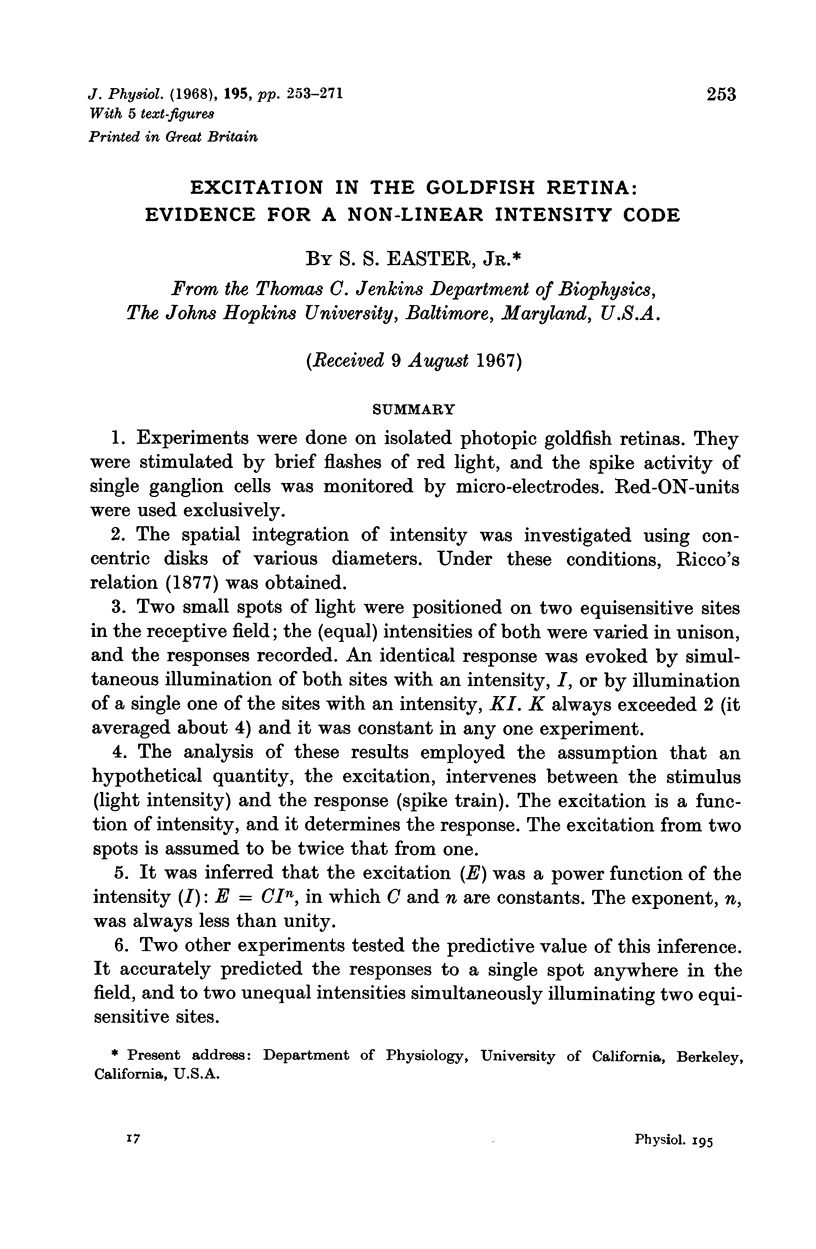
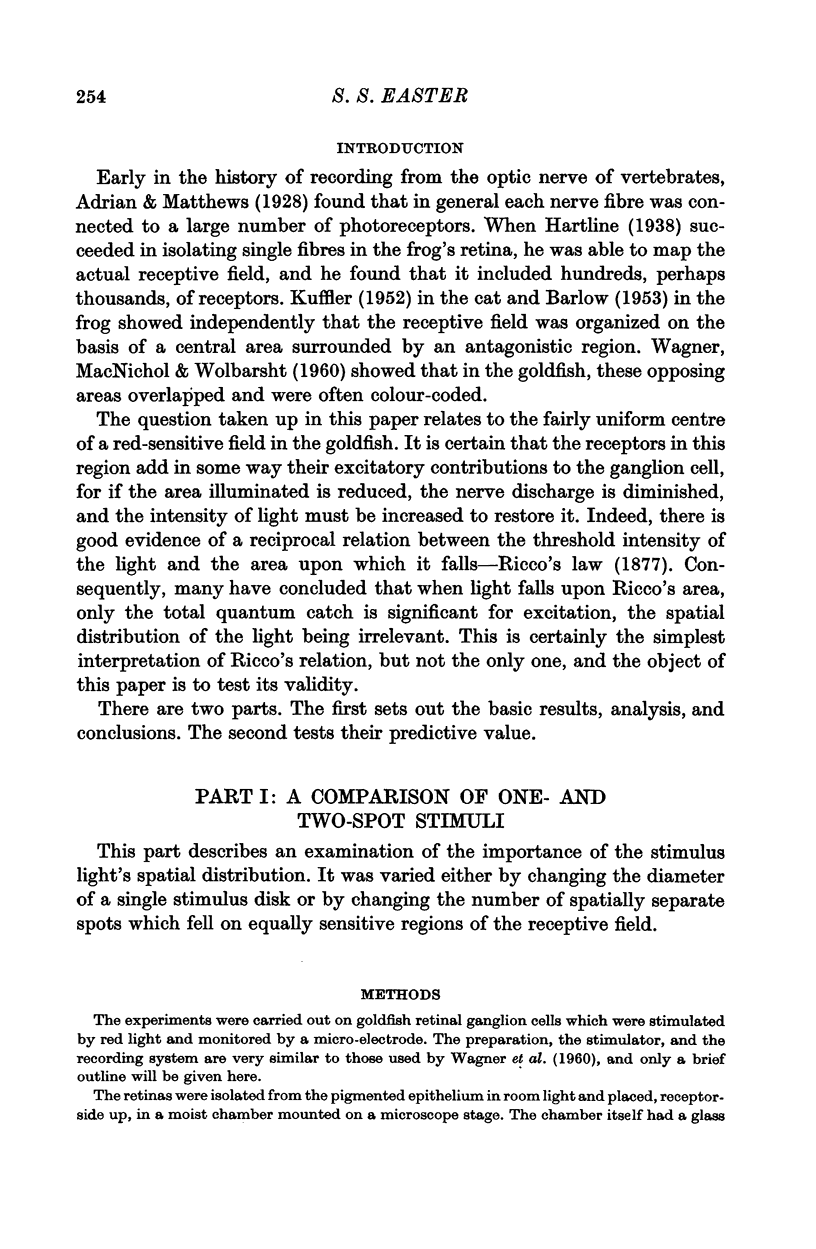
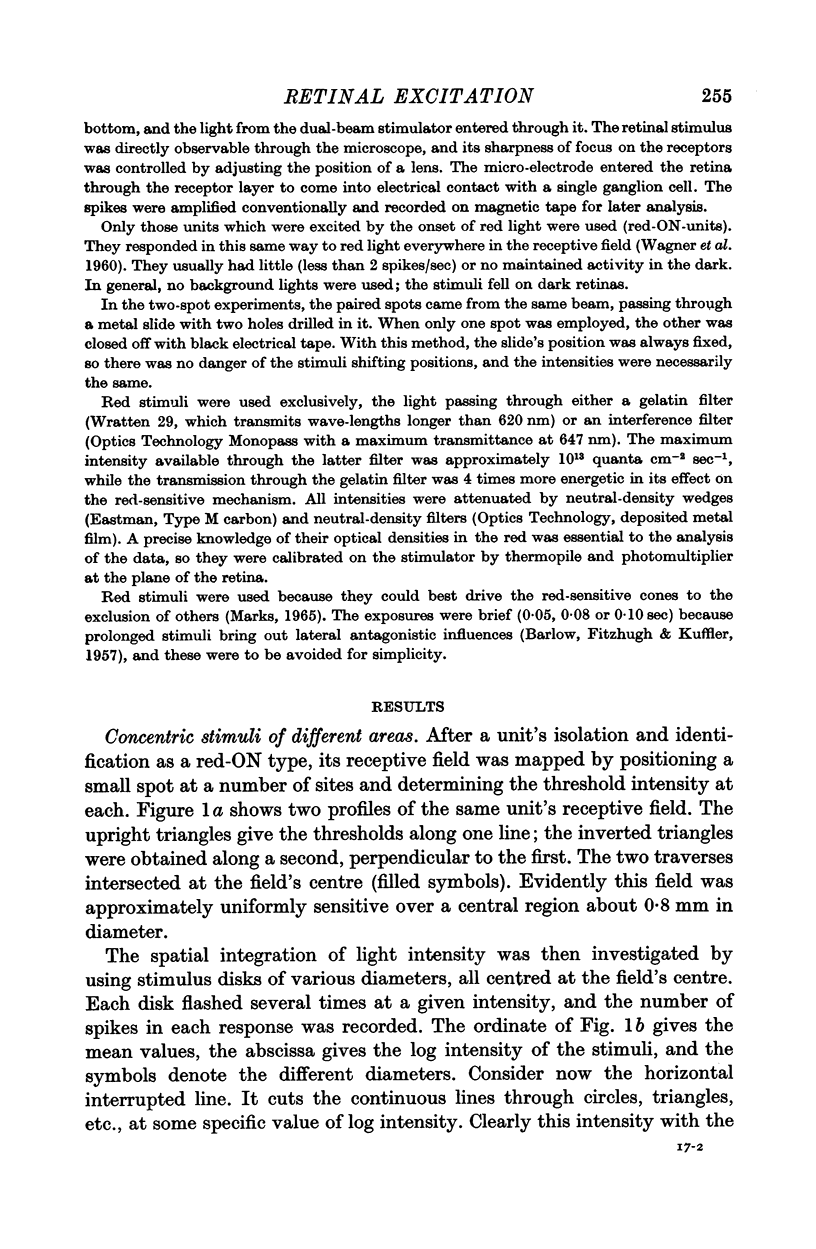
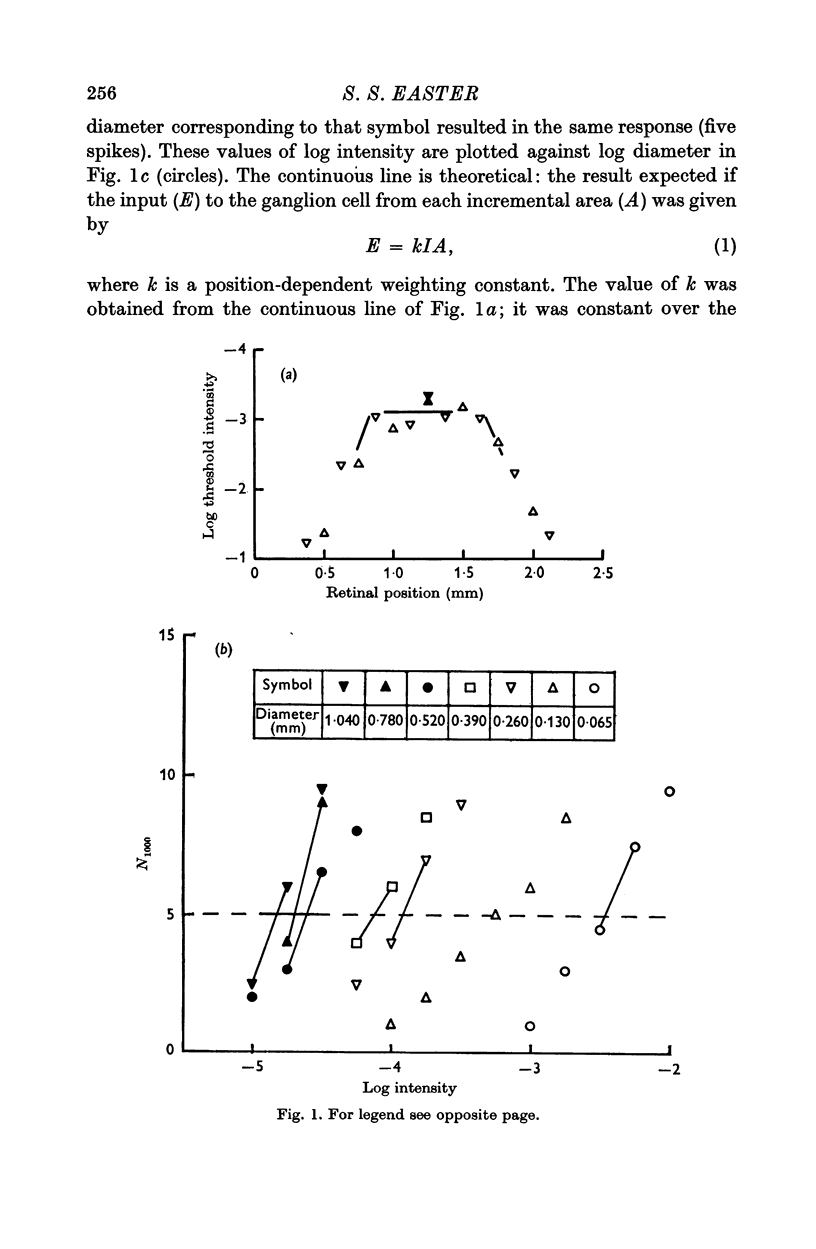
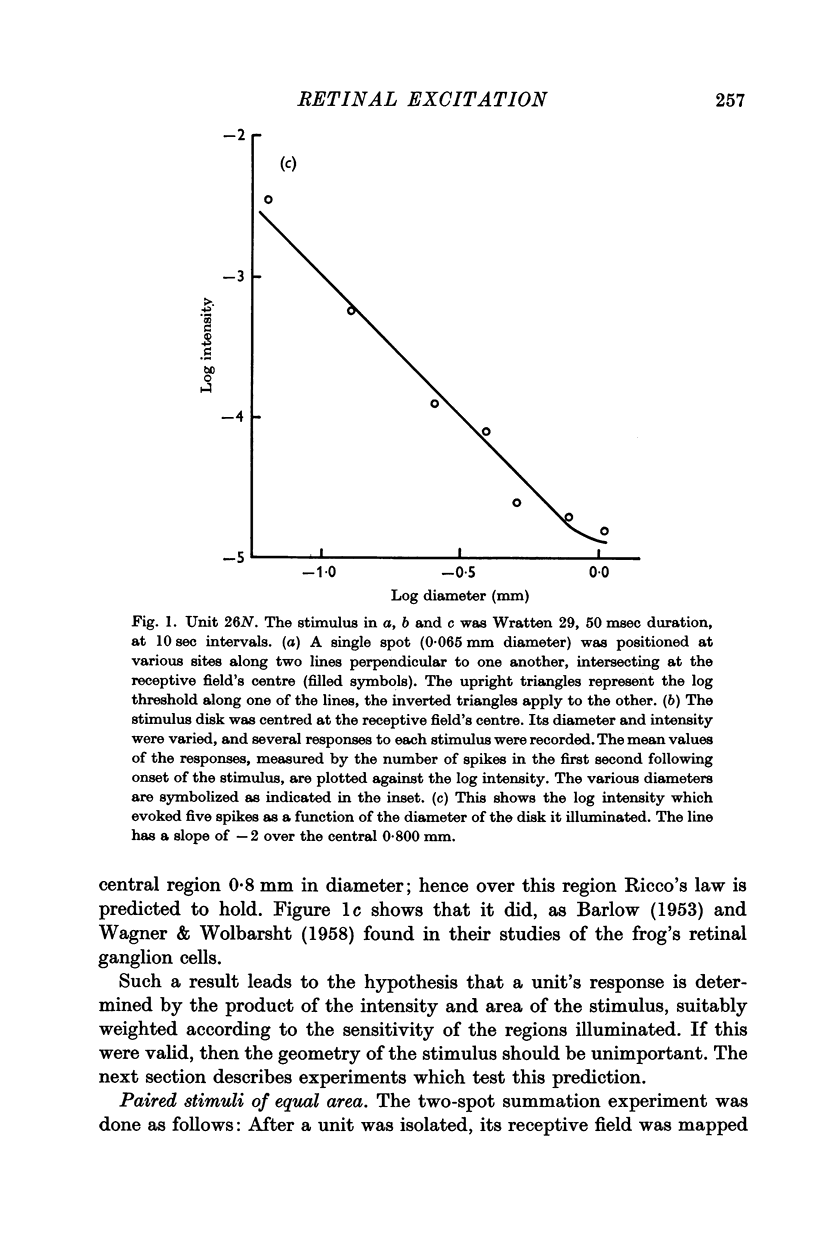
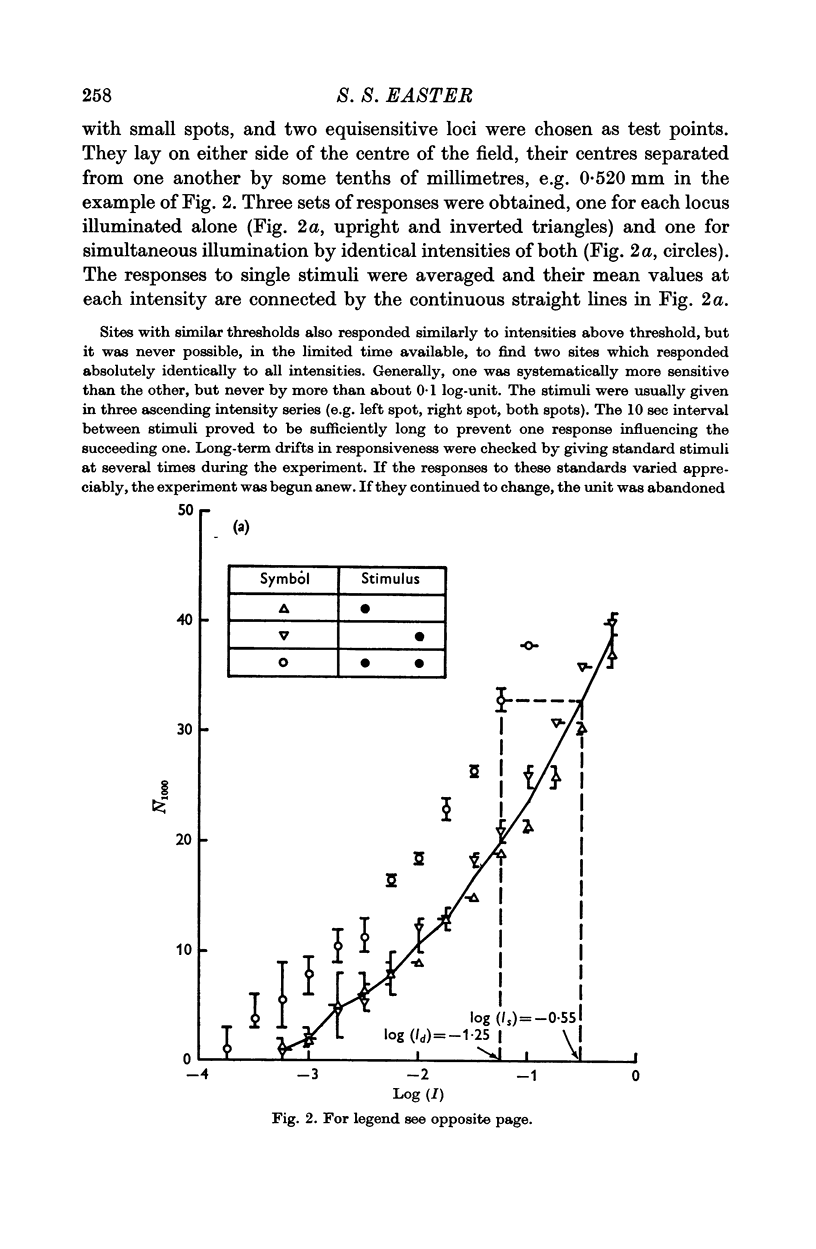

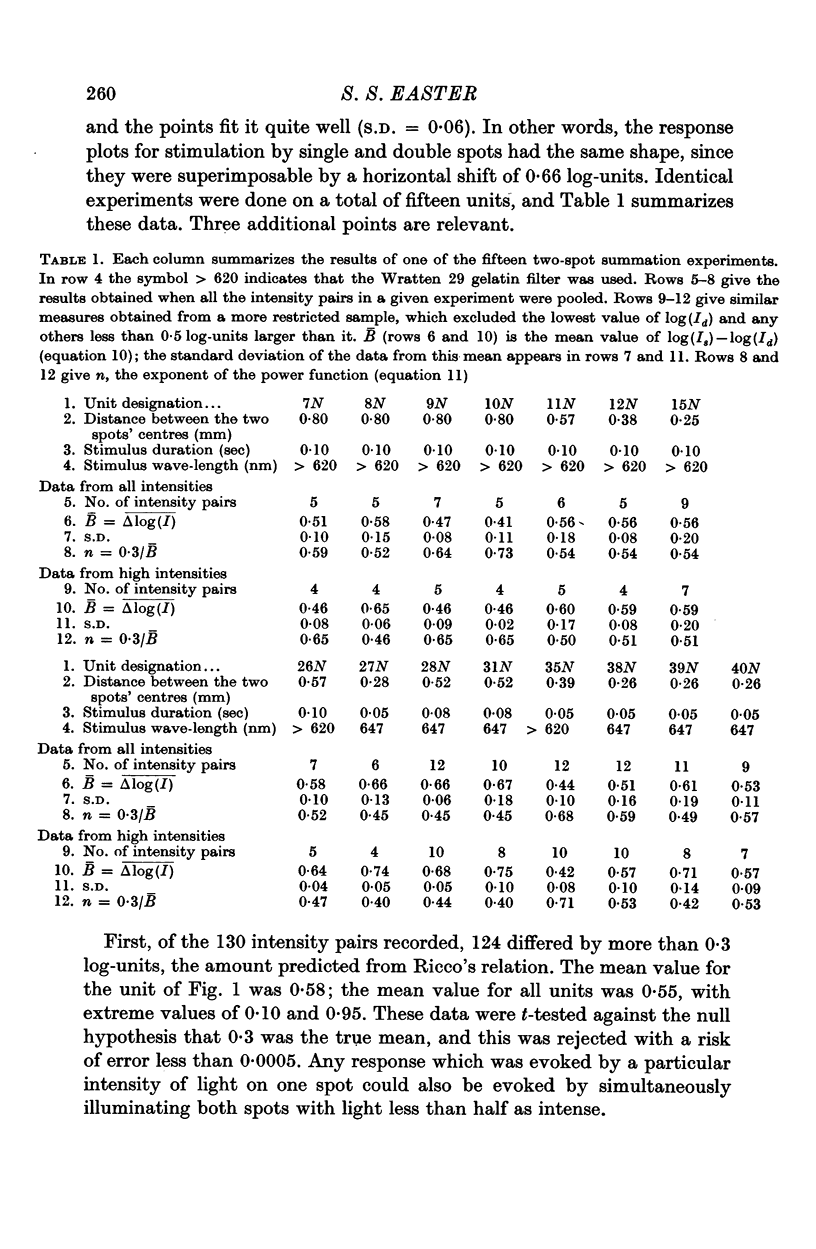
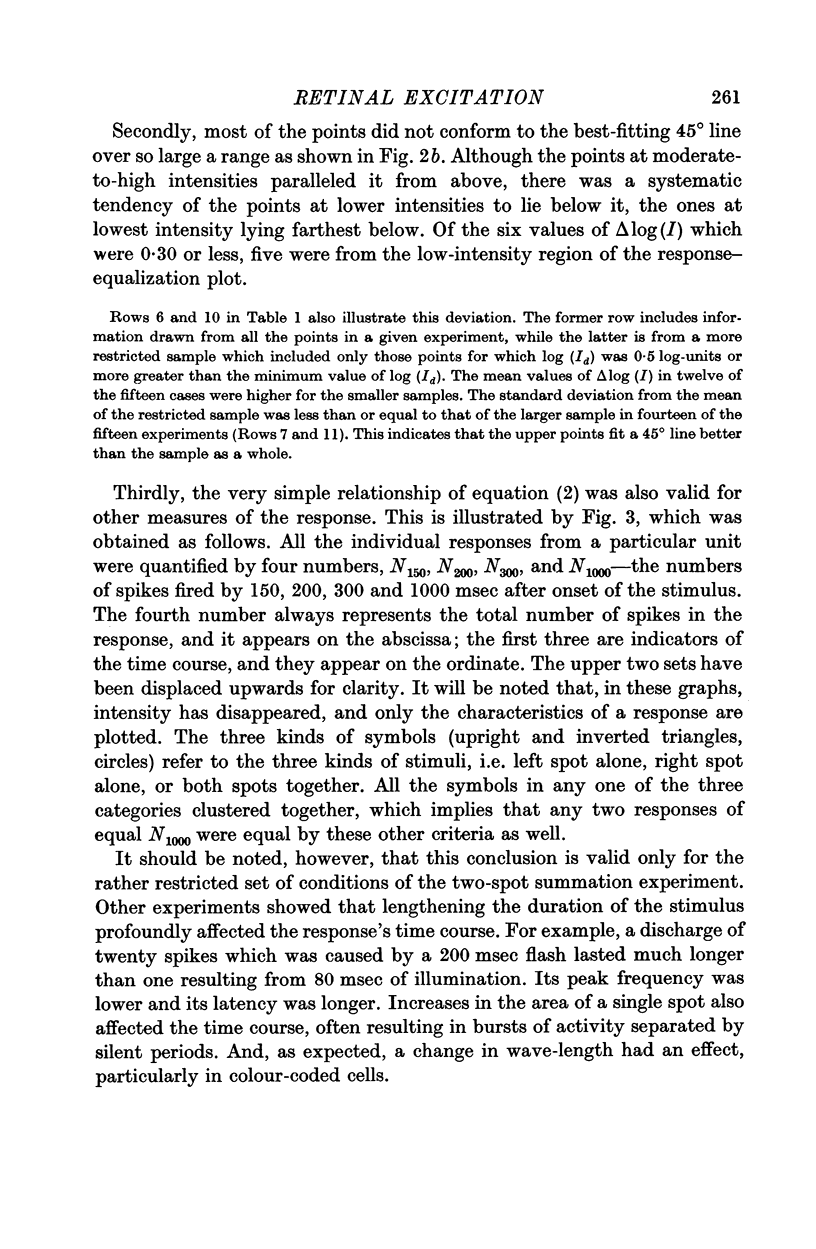
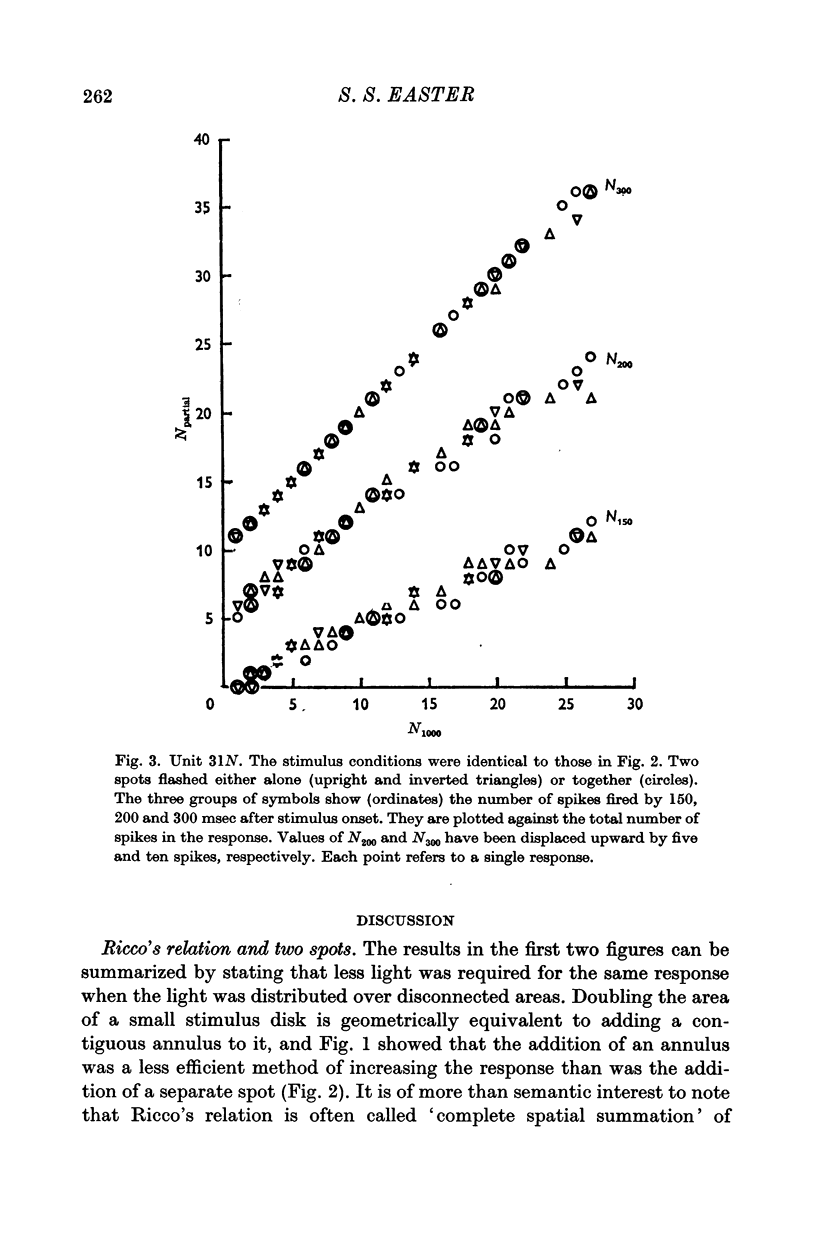
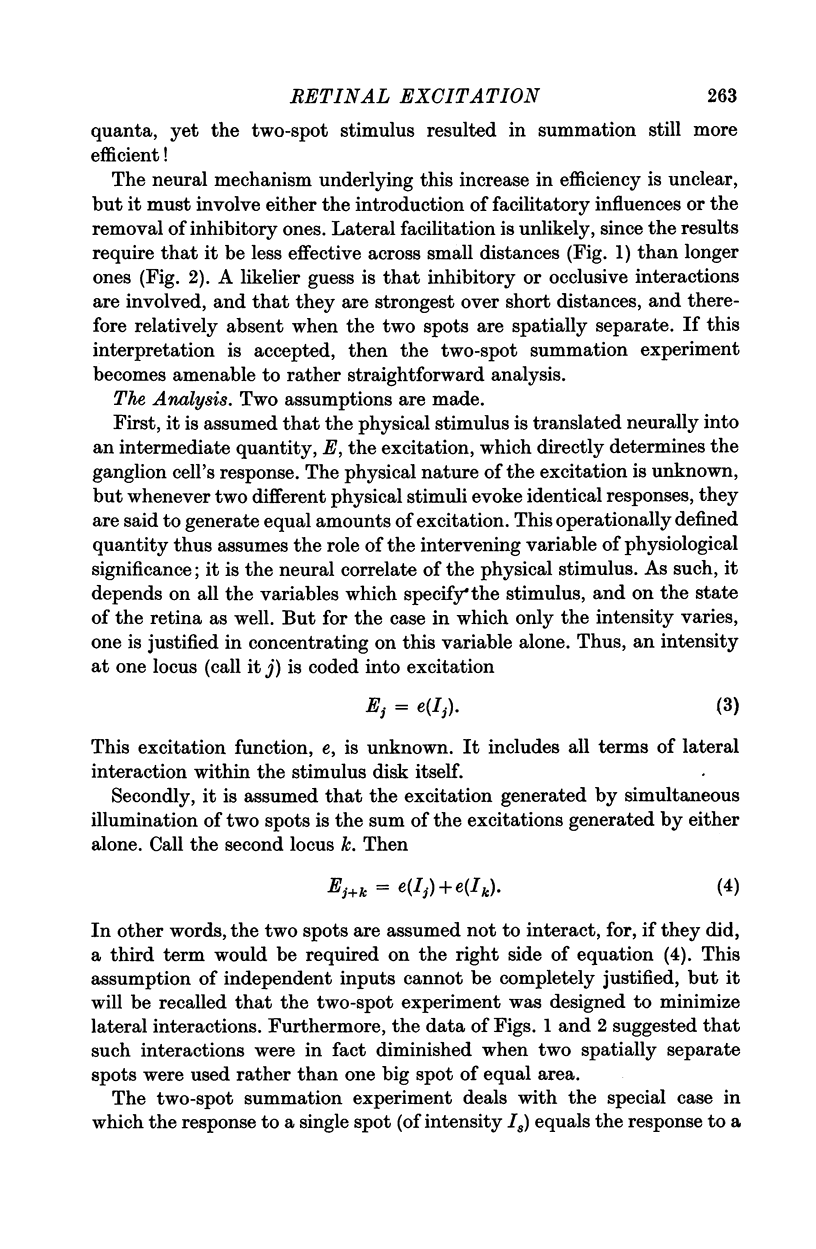
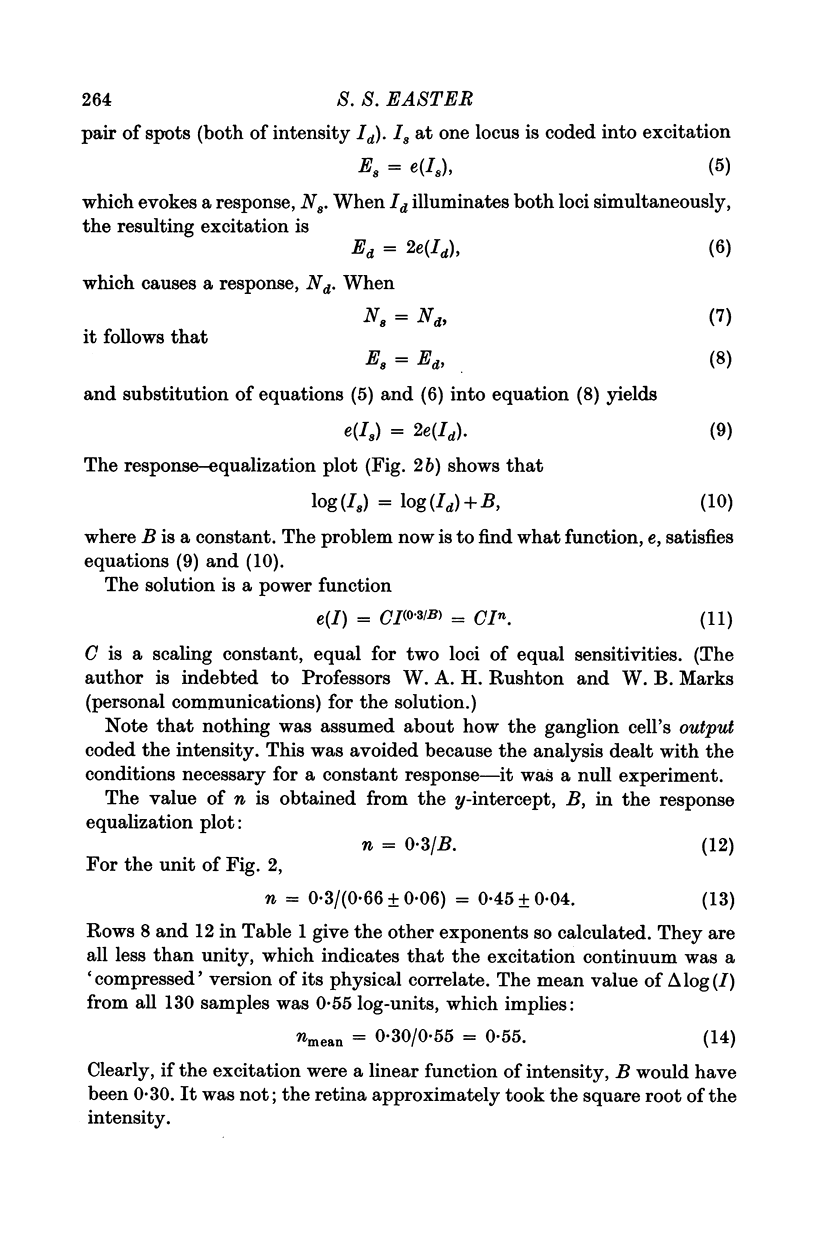
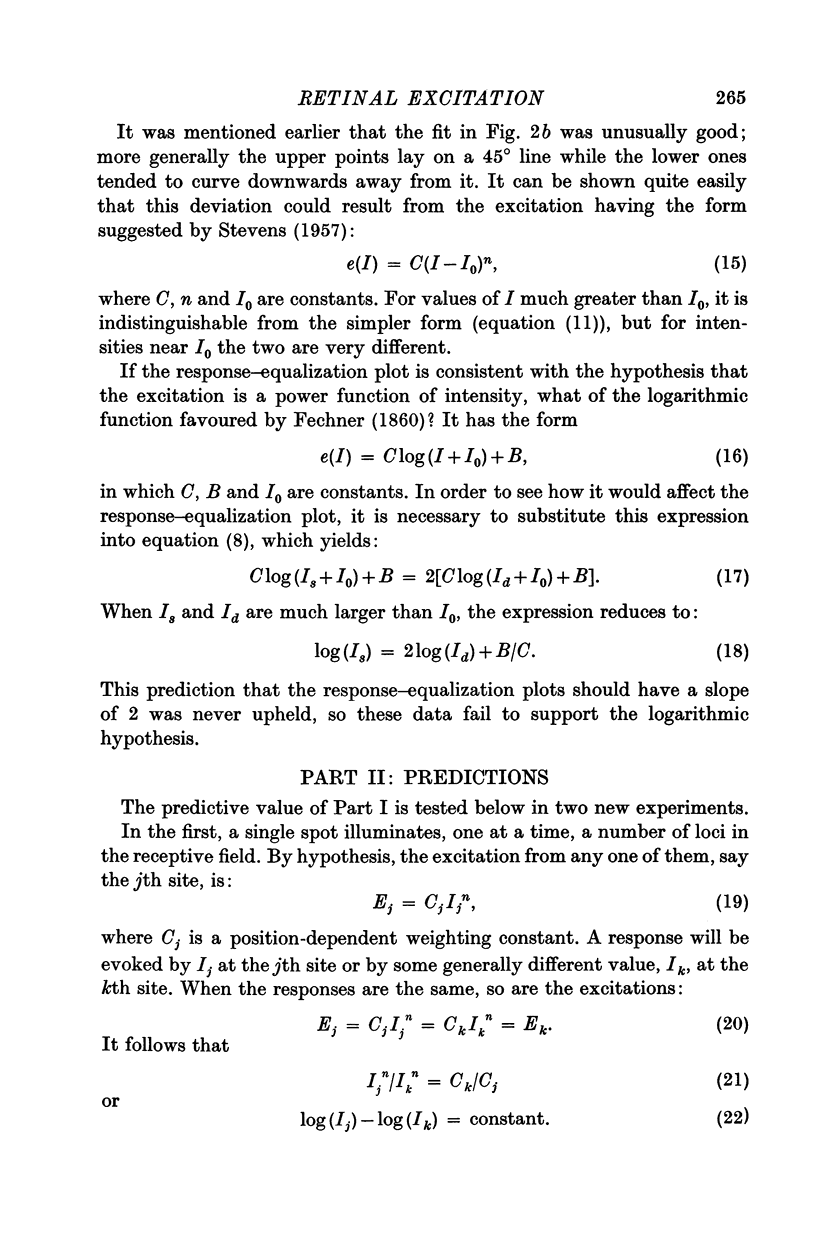
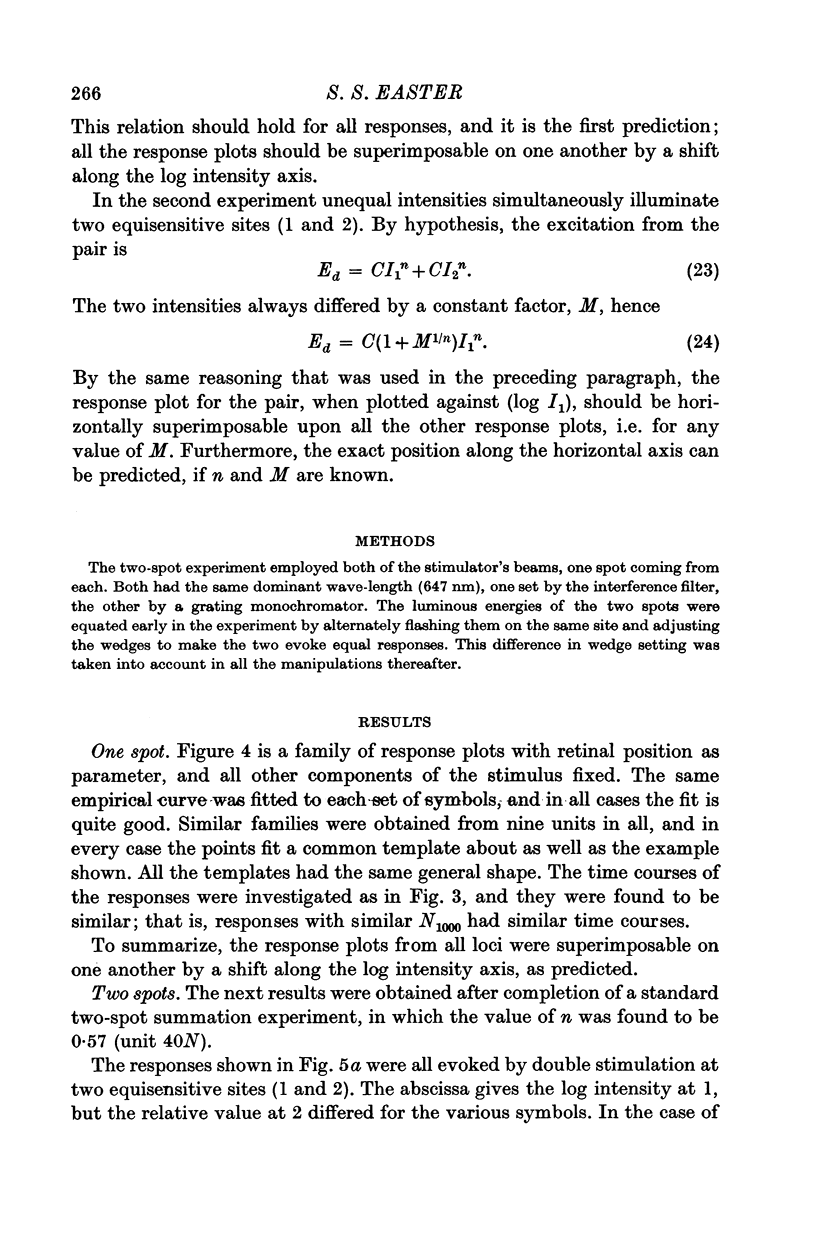
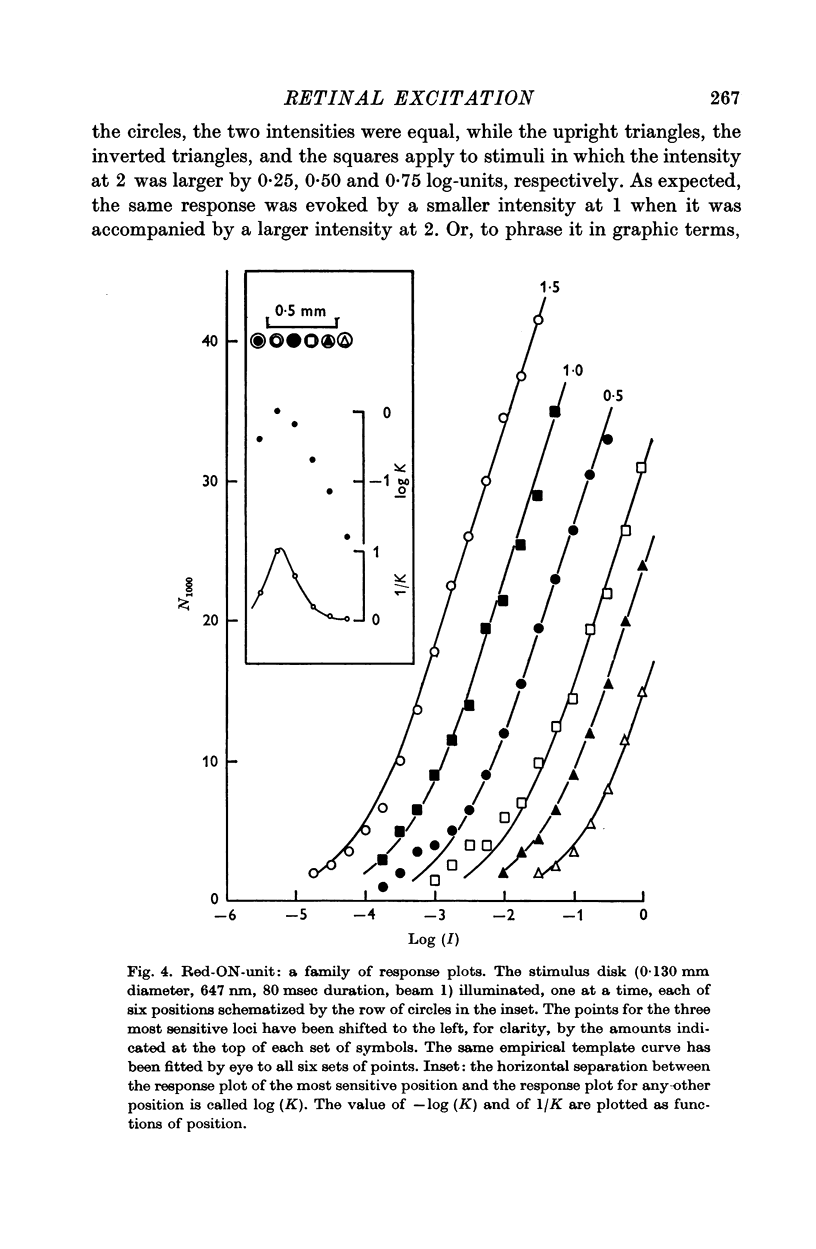
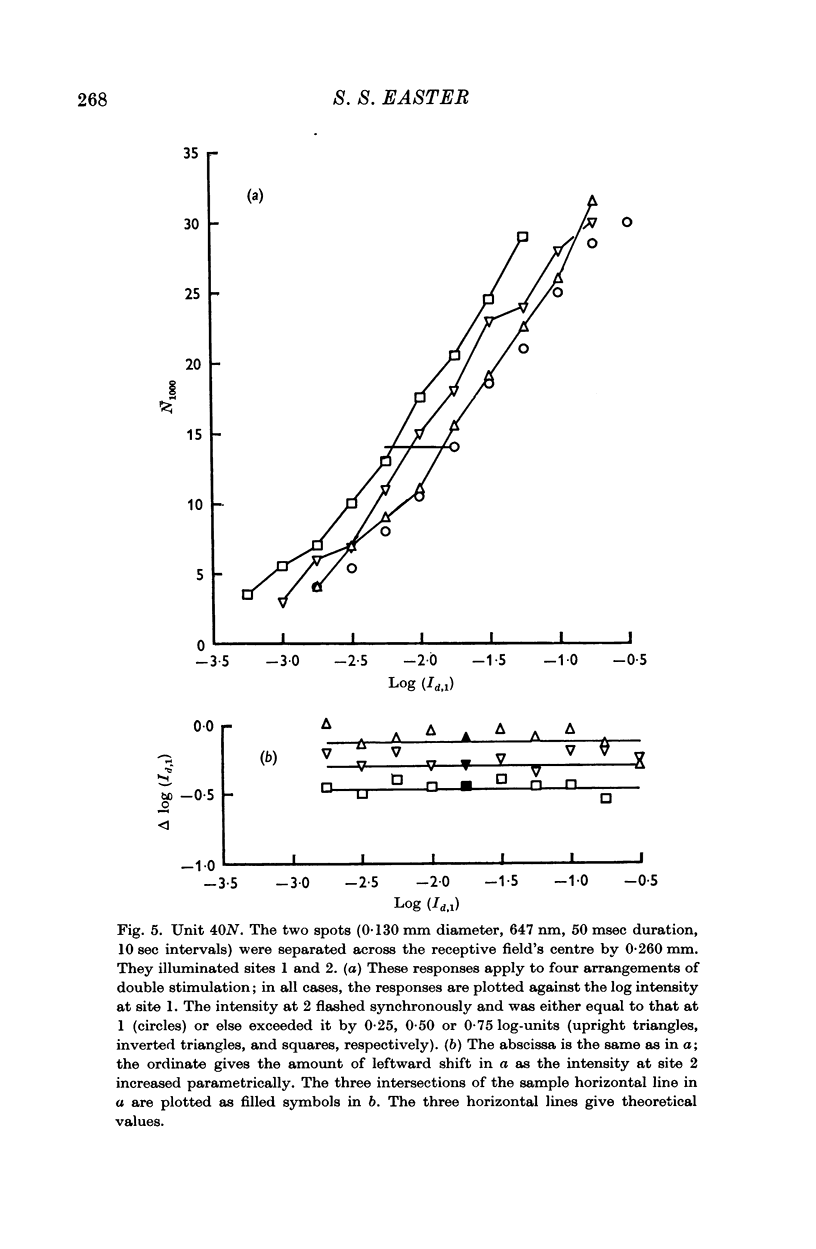
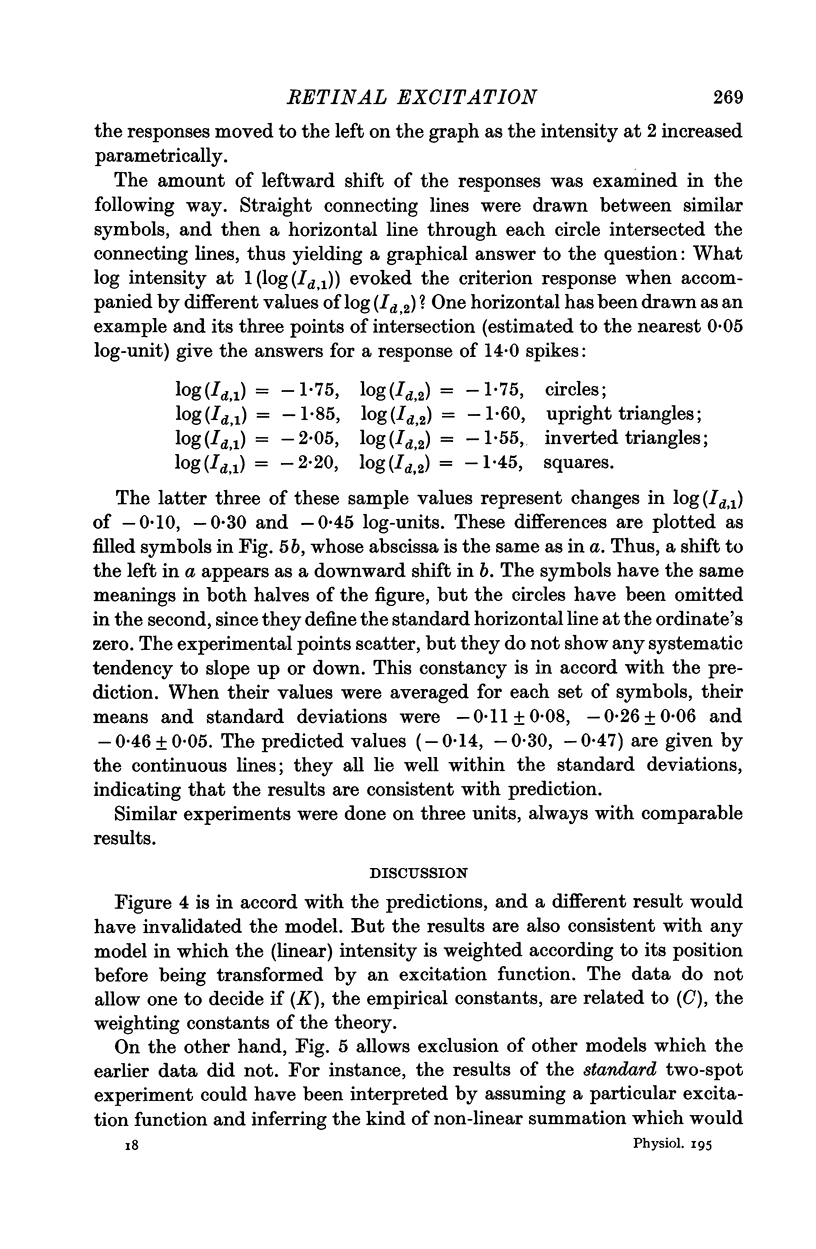
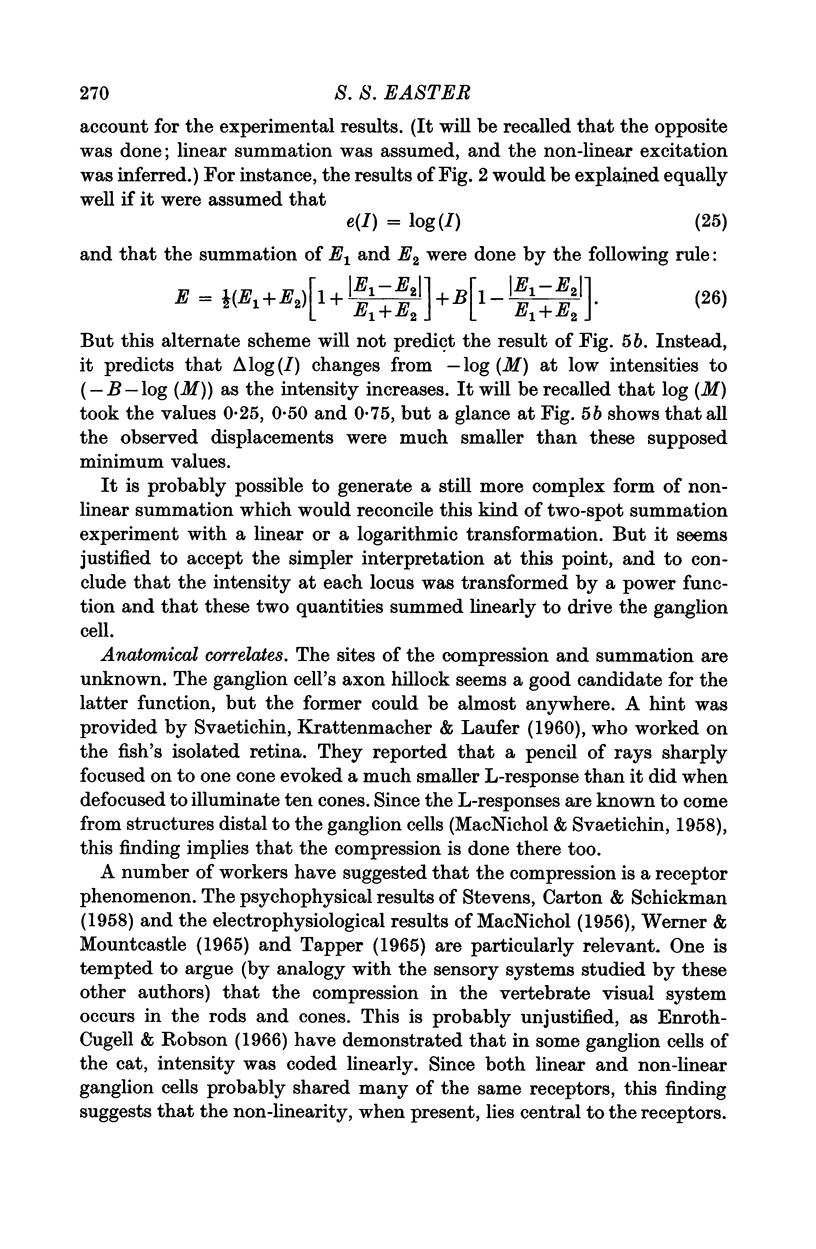
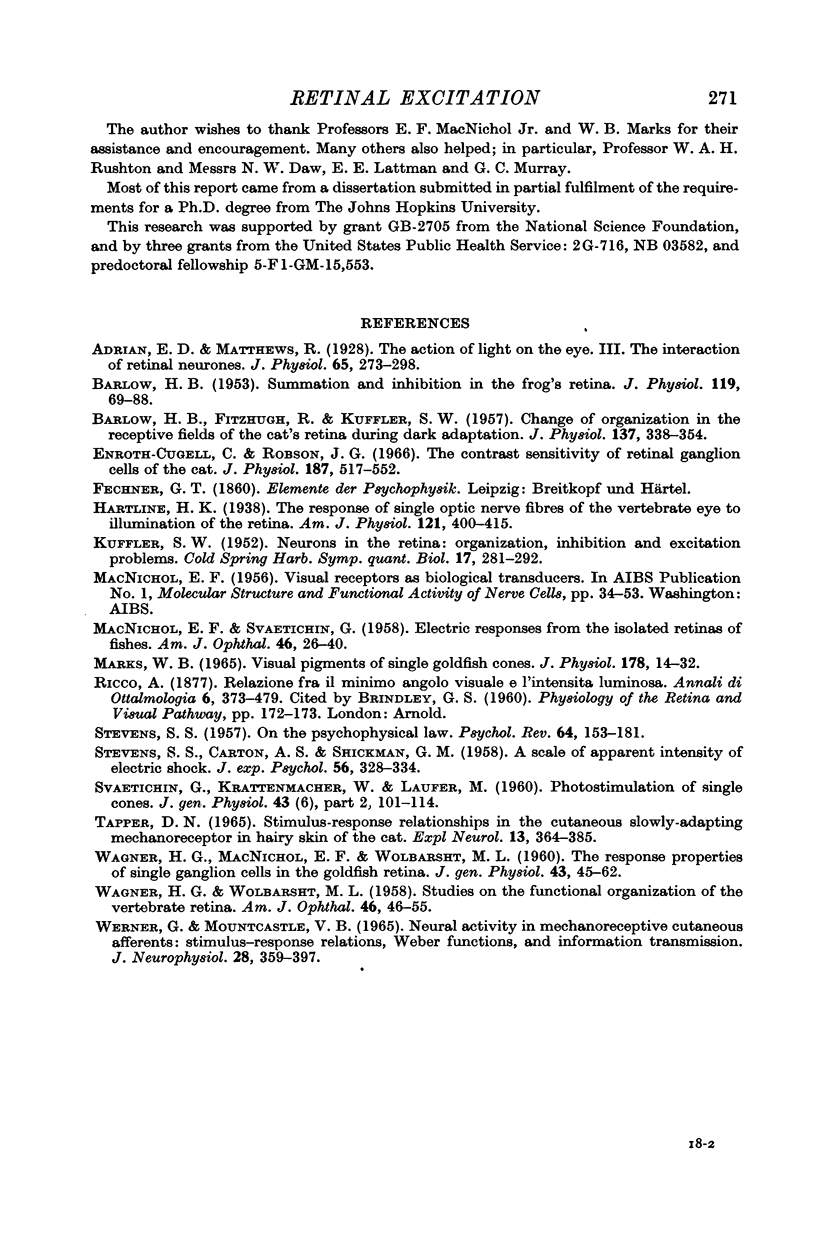
Selected References
These references are in PubMed. This may not be the complete list of references from this article.
- Adrian E. D., Matthews R. The action of light on the eye: Part III. The interaction of retinal neurones. J Physiol. 1928 Jun 24;65(3):273–298. doi: 10.1113/jphysiol.1928.sp002475. [DOI] [PMC free article] [PubMed] [Google Scholar]
- BARLOW H. B., FITZHUGH R., KUFFLER S. W. Change of organization in the receptive fields of the cat's retina during dark adaptation. J Physiol. 1957 Aug 6;137(3):338–354. doi: 10.1113/jphysiol.1957.sp005817. [DOI] [PMC free article] [PubMed] [Google Scholar]
- BARLOW H. B. Summation and inhibition in the frog's retina. J Physiol. 1953 Jan;119(1):69–88. doi: 10.1113/jphysiol.1953.sp004829. [DOI] [PMC free article] [PubMed] [Google Scholar]
- Enroth-Cugell C., Robson J. G. The contrast sensitivity of retinal ganglion cells of the cat. J Physiol. 1966 Dec;187(3):517–552. doi: 10.1113/jphysiol.1966.sp008107. [DOI] [PMC free article] [PubMed] [Google Scholar]
- KUFFLER S. W. Neurons in the retina; organization, inhibition and excitation problems. Cold Spring Harb Symp Quant Biol. 1952;17:281–292. doi: 10.1101/sqb.1952.017.01.026. [DOI] [PubMed] [Google Scholar]
- MACNICHOL E. J., SVAETICHIN G. Electric responses from the isolated retinas of fishes. Am J Ophthalmol. 1958 Sep;46(3 Pt 2):26–46. doi: 10.1016/0002-9394(58)90053-9. [DOI] [PubMed] [Google Scholar]
- MARKS W. B. VISUAL PIGMENTS OF SINGLE GOLDFISH CONES. J Physiol. 1965 May;178:14–32. doi: 10.1113/jphysiol.1965.sp007611. [DOI] [PMC free article] [PubMed] [Google Scholar]
- STEVENS S. S., CARTON A. S., SHICKMAN G. M. A scale of apparent intensity of electric shock. J Exp Psychol. 1958 Oct;56(4):328–334. doi: 10.1037/h0040896. [DOI] [PubMed] [Google Scholar]
- STEVENS S. S. On the psychophysical law. Psychol Rev. 1957 May;64(3):153–181. doi: 10.1037/h0046162. [DOI] [PubMed] [Google Scholar]
- SVAETICHIN G., KRATTENMACHER W., LAUFER M. Photostimulation of single cones. J Gen Physiol. 1960 Jul;43(6):101–114. doi: 10.1085/jgp.43.6.101. [DOI] [PMC free article] [PubMed] [Google Scholar]
- Tapper D. N. Stimulus-response relationships in the cutaneous slowly-adapting mechanoreceptor in hairy skin of the cat. Exp Neurol. 1965 Dec;13(4):364–385. doi: 10.1016/0014-4886(65)90125-1. [DOI] [PubMed] [Google Scholar]
- WAGNER H. G., WOLBARSHT M. L. Studies on the functional organization of the vertebrate retina. Am J Ophthalmol. 1958 Sep;46(3 Pt 2):46–59. doi: 10.1016/0002-9394(58)90054-0. [DOI] [PubMed] [Google Scholar]
- WERNER G., MOUNTCASTLE V. B. NEURAL ACTIVITY IN MECHANORECEPTIVE CUTANEOUS AFFERENTS: STIMULUS-RESPONSE RELATIONS, WEBER FUNCTIONS, AND INFORMATION TRANSMISSION. J Neurophysiol. 1965 Mar;28:359–397. doi: 10.1152/jn.1965.28.2.359. [DOI] [PubMed] [Google Scholar]


